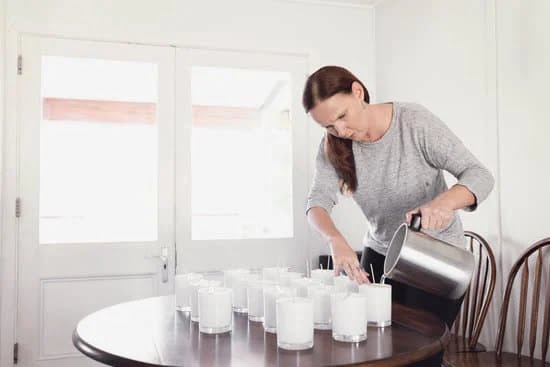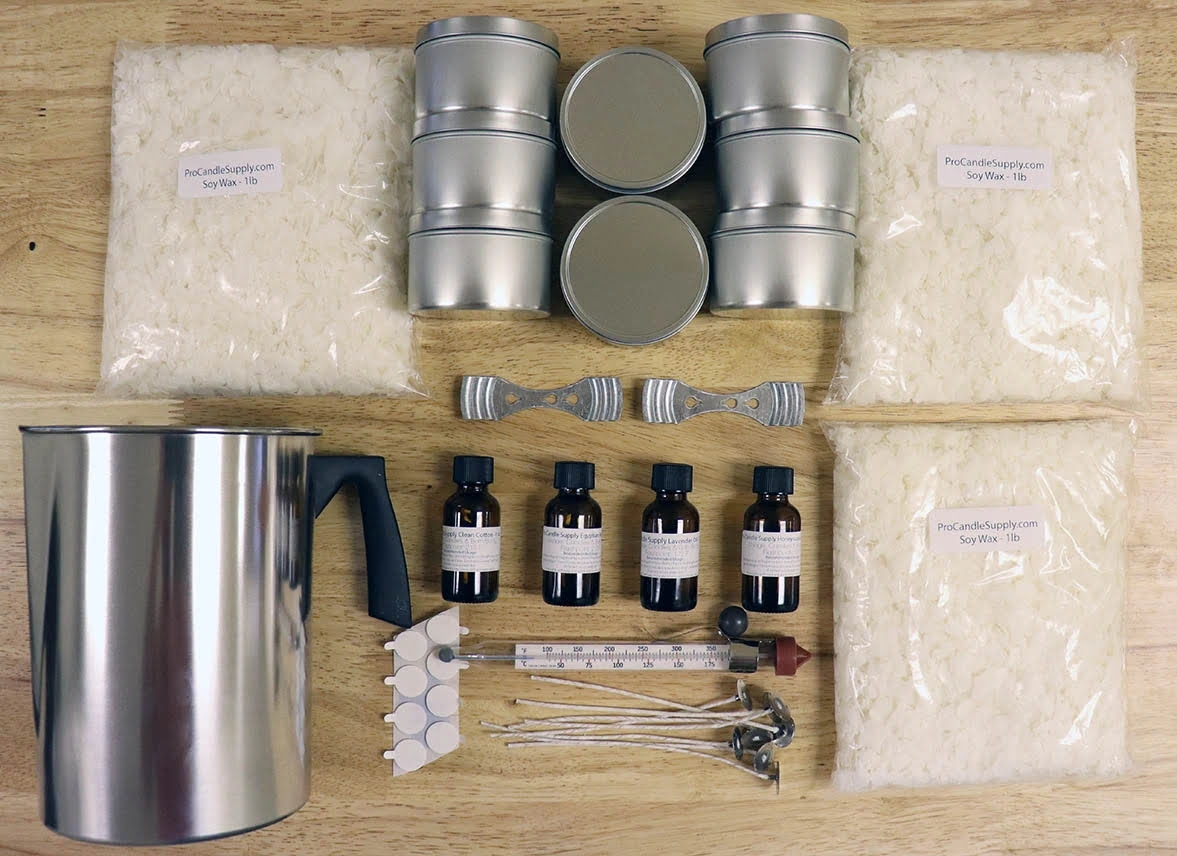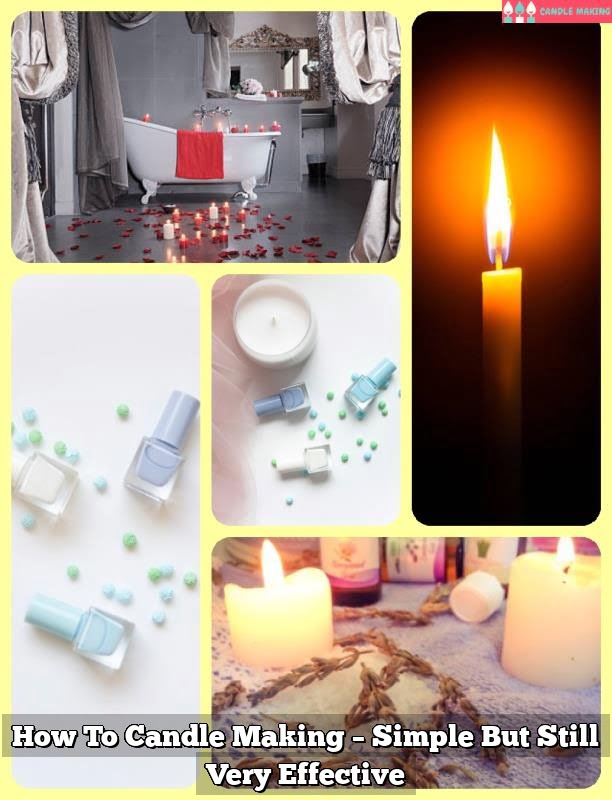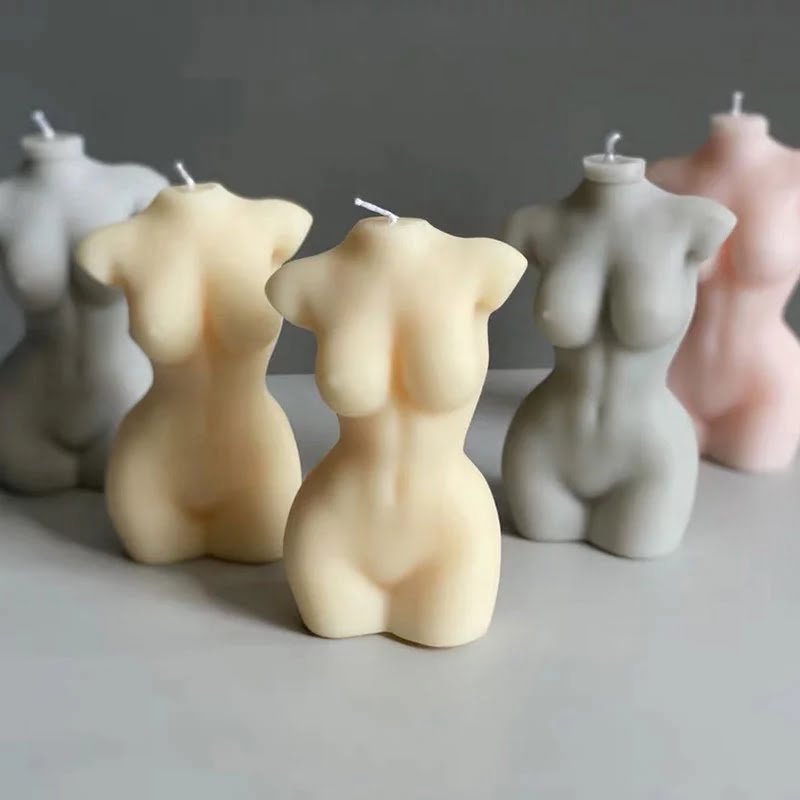The art of candle making has experienced a resurgence in recent years, with more and more people turning to this traditional craft as a creative outlet. But beyond just being a hobby, many individuals are also exploring the potential profitability of candle making as a business venture. This article delves into the question that aspiring candle makers ask themselves: is making candles cost effective?
Candle making has become increasingly popular as people seek unique and personalized ways to enhance their living spaces and create a cozy ambiance. Whether it’s for relaxation purposes or simply to add a touch of elegance to their homes, candles have found their way back into the mainstream. As a result, many enterprising individuals are considering whether they can turn this passion into a feasible source of income.
To answer the question of cost effectiveness, it is crucial to conduct a comprehensive cost analysis. Factors such as material costs, equipment investment, time and labor required, bulk buying strategies, and price comparisons between store-bought and homemade candles all need to be considered. By carefully examining these elements, individuals can gain insight into the financial viability of starting a candle making business.
This article aims to provide prospective candle makers with all the necessary information they need before embarking on their entrepreneurial journey. From understanding the expenses involved in candle making to exploring techniques for reducing costs and personalizing candles for added value, readers will be equipped with practical knowledge that can help them make informed decisions about whether candle making is indeed a cost-effective and rewarding hobby or business venture.
The Cost Analysis
Factors to Consider before Starting a Candle Making Business
Before deciding whether making candles is cost effective, it is important to consider a few factors. Firstly, you need to assess your passion and commitment for candle making. Starting a business in this industry requires dedication and love for the craft, as it can be time-consuming and labor-intensive. Additionally, you should identify your target market and understand the demand for homemade candles in your area.
Another crucial factor to consider is the upfront investment required for starting a candle making business. You will need to purchase various materials such as wax, wicks, fragrances, dyes, containers, and packaging supplies. These costs can vary depending on the quality of materials you choose. It is essential to conduct thorough research to find reliable suppliers who offer affordable yet high-quality materials.
Breaking Down the Expenses: Material Costs in Candle Making
To determine whether making candles is cost effective, it is necessary to break down the expenses associated with candle making. The main material costs include wax, wicks, fragrances, and containers.
The cost of wax can vary depending on the type and quality chosen. Beeswax tends to be more expensive compared to soy or paraffin wax. It is essential to calculate how much wax you will need based on the size of your candles and estimate the cost accordingly.
Wicks are another significant expense in candle making. The price varies depending on the thickness and length of the wick. Fragrances are optional but add value to your candles. They can be purchased in small bottles or bulk quantities at a lower price per unit.
Lastly, containers play an important role in determining costs as well. Glass jars are popular choices but can be more expensive compared to tin or ceramic containers. Calculate the material costs based on the number of candles you plan to produce to have an accurate estimation.
The Equipment Investment: Are the Initial Costs Worth It?
Apart from material costs, there are also equipment expenses to consider before starting a candle making business. While you can begin with basic tools like a double boiler and a thermometer, investing in more specialized equipment can save time and improve efficiency in the long run.
Some essential equipment for candle making includes a wax melter, a pouring pitcher, a heat gun or hairdryer for troubleshooting, and scales for accurate measurement of ingredients. The initial investment in equipment can be relatively high but can help streamline the candle-making process, resulting in higher productivity.
Ultimately, when evaluating whether making candles is cost effective or not, it is crucial to consider the overall expenses including both materials and equipment. By carefully calculating these costs and planning ahead, aspiring candle makers can determine if their business venture will be financially viable.
Factors to Consider before Starting a Candle Making Business
Starting a candle making business can be an exciting and potentially profitable venture. However, before diving headfirst into this endeavor, there are several factors to consider.
Market Analysis
One of the first things to assess is the demand for candles in your area. Conducting market research will help you understand if there is a need for your product and what potential competition you may face. Look into local stores that sell candles, online platforms, and even attend craft fairs or farmers markets to gauge consumer interest.
Skill Development
While making candles may seem like a simple process, it requires skill and knowledge to create high-quality products. Before starting a candle making business, take the time to learn different candle making techniques, experiment with various ingredients and scents, and understand the safety precautions involved. Consider taking classes or workshops or finding resources online to help you improve your skills.
Business Plan
Creating a solid business plan is crucial for any new venture. This plan should outline your target market, marketing strategies, sales projections, budget, and financial goals. It will serve as your roadmap and provide clarity on how to achieve success in your candle making business.
Once you have carefully considered these factors and feel confident in pursuing a candle making business, you can move forward with the next steps of setting up your workspace, sourcing materials, and creating unique candle designs that cater to the preferences of your target audience.
Breaking Down the Expenses
One of the key factors to consider when determining if making candles is cost effective is the analysis of the material costs involved. In this section, we will break down the expenses associated with candle making and explore how they impact the overall cost effectiveness of this hobby or business venture.
The main materials needed for candle making include wax, wicks, fragrance oils, and containers. The cost of these materials can vary depending on the quality and quantity purchased. For example, soy wax is often more expensive than paraffin wax, but it is considered more environmentally friendly. Similarly, higher quality fragrance oils may come with a higher price tag.
| Material | Average Cost per Unit |
|---|---|
| Wax (per pound) | $X.XX |
| Wicks (per pack) | $X.XX |
| Fragrance Oils (per ounce) | $X.XX |
| Containers (each) | $X.XX |
It is important to note that these are average costs and may vary depending on factors such as geographical location and supplier discounts. It is recommended to research and compare prices from different suppliers to find the best deals.
By understanding the material costs involved in candle making, individuals can evaluate whether this craft aligns with their budget and financial goals. Additionally, analyzing material costs can help determine pricing for homemade candles if considering selling them as a business venture.
The Equipment Investment
When considering starting a candle making business, one important factor to assess is the equipment investment and whether the initial costs are worth it. The equipment required for candle making can vary depending on the scale and type of candles being produced. From melters and pourers to molds and thermometers, there are several essential tools that need to be purchased before getting started.
Investing in quality equipment is crucial for ensuring consistent and high-quality candle production. While there may be some upfront costs associated with purchasing the necessary equipment, it can prove to be a worthwhile investment in the long run. High-quality equipment tends to have better durability, which reduces the need for frequent replacements. Additionally, it allows for more precise temperature control during the candle making process, resulting in better quality products.
To determine whether the initial costs of equipment are worth it, candle makers should consider their production goals and budget constraints. It may be beneficial to start with basic equipment and gradually upgrade as the business grows. This approach allows for initial cost savings while still producing candles of acceptable quality.
Candle making enthusiasts who do not intend to start a business but rather enjoy it as a hobby may also find value in investing in good-quality equipment. A well-equipped setup can enhance creativity, improve precision, and result in more satisfying and visually appealing candles.
| Equipment | Price Range (USD) |
|---|---|
| Melters/Pourers | 30-100 |
| Candle Molds | 10-50 |
| Thermometers | 5-20 |
| Wax Melting Pots | 20-60 |
| Heat Guns | 20-50 |
While these are just some examples, the prices can vary depending on the brand, quality, and additional features. It is important for candle makers to research various options and choose equipment that aligns with their specific needs and budget.
Overall, investing in good-quality equipment for candle making can lead to more consistent and higher-quality candle production. Whether starting a business or pursuing it as a hobby, carefully considering the initial costs of equipment is essential for making an informed decision. By weighing the benefits of quality equipment against one’s goals and budget constraints, aspiring candle makers can determine if the investment is worth it.
Time and Labor
Understanding the Time and Labor Involved in Candle Making
Candle making is a craft that requires not only materials and equipment but also time and effort. Before deciding to start a candle making business or hobby, it’s essential to understand the amount of time and labor involved in the process. This section will delve into the different aspects of candle making that contribute to the overall time and effort required.
Learning Curve for Beginners
For those new to candle making, there is typically a learning curve involved. It takes time to familiarize yourself with different techniques, methods, and safety precautions. In the beginning, you may need to invest more time in research, experimenting with different waxes, fragrance oils, colors, and wicks to find your preferred combination. Additionally, understanding how to properly melt wax, measure fragrances accurately, pour candles without air bubbles or uneven surfaces all take practice.
However, as you gain experience and become proficient in candle making techniques, the process becomes more streamlined. You’ll be able to estimate measurements more easily, anticipate potential issues during pouring or cooling stages and troubleshoot effectively.
Time Investment for Small-Scale vs. Large-Scale Production
The amount of time required for candle making can vary depending on whether you are creating candles on a small scale or large scale. If you’re planning on operating a candle making business with high production volumes or fulfilling large orders regularly, it’s crucial to assess how much time you can dedicate to this task.
Small-scale production allows for more flexible timing as you can work at your own pace without strict deadlines to meet. On the other hand, if you plan on expanding your business or fulfilling substantial orders within tight timelines, adequate planning becomes essential.
It’s important to keep in mind that while larger-scale production may require an increased investment of time initially due to larger quantities produced or potential challenges with scaling up, it can also offer economies of scale and efficiencies in the long run.
Overall, the amount of time and effort candle making requires can vary depending on factors such as your level of experience, production volume, and order size. While it may demand time and attention to detail initially, with practice and efficiency, the process can become more streamlined over time.
Bulk Buying and Cost Reduction Strategies for Candle Makers
One of the key factors to consider when determining the cost effectiveness of making candles is the ability to reduce expenses through bulk buying and cost reduction strategies. By purchasing materials in larger quantities, candle makers can often secure discounts from suppliers, leading to significant cost savings over time.
One effective strategy for reducing costs is to buy wax, wicks, and other essential supplies in bulk. Purchasing these items in larger quantities not only allows for discounted prices but also minimizes shipping costs per unit. Additionally, buying in bulk ensures that you have a sufficient supply of materials on hand, reducing the need for frequent reordering and potential delays in production.
Another way to lower expenses is by comparing prices from different suppliers and choosing those that offer the best value for money. It’s important to do thorough research on various suppliers and take into account factors such as quality, reputation, and shipping fees. Creating a spreadsheet or list to track prices can help candle makers make informed decisions about which suppliers provide the most cost-effective options.
In addition to bulk buying, candle makers can explore other cost reduction strategies. For instance, recycling or repurposing packaging materials can help save money on packaging costs. Utilizing efficient production methods and streamlining workflow processes can also reduce labor costs. Moreover, embracing sustainable practices such as using natural dyes or upcycling containers can contribute not only to cost savings but also to environmental benefits.
By implementing these bulk buying techniques and utilizing cost reduction strategies, candle makers can ultimately maximize their profitability while maintaining product quality. It’s important for aspiring candle makers to carefully consider these factors before starting their business venture in order to ensure long-term success and competitiveness in the market.
Comparing the Prices
With the increasing popularity of candle making, many people are curious about whether making candles is cost-effective compared to buying them from a store. In this section, we will compare the prices of store-bought candles and homemade candles to determine which option offers better value for money.
Price Comparison
One of the main reasons why people consider making their own candles is to save money. Store-bought candles can be quite expensive, especially if you prefer high-quality or specialty candles. On the other hand, homemade candles allow you to control the cost by choosing affordable materials and customizing your designs.
When comparing prices, it’s important to consider the cost per candle. Homemade candles typically require upfront investments in materials and equipment, but once these expenses are covered, each candle becomes significantly cheaper to produce. Meanwhile, store-bought candles may have higher initial costs per unit but do not require any ongoing investment.
Factors Influencing Cost
Several factors influence the cost comparison between store-bought and homemade candles. The type of wax used plays a significant role in determining cost-effectiveness. Natural waxes like soy or beeswax tend to be more expensive than paraffin wax commonly used in commercially produced candles.
Additionally, when you make your own candles, you have control over the size and fragrance of each candle. If you prefer larger or heavily scented candles, it may be more economical to make them yourself since store-bought options with these specifications often come at a premium price.
Value beyond Cost
While cost is an essential factor to consider when deciding whether to make or buy candles, it is not the only consideration. Making your own candles allows for customization and personalization that cannot be replicated with mass-produced store-bought options. You have the freedom to experiment with different colors, scents, and textures according to your preferences or even create unique gifts for friends and family.
Moreover, the act of making candles can be a fulfilling and therapeutic hobby that provides a sense of accomplishment. Many candle makers find joy in the process itself, as well as the opportunity to create something unique and meaningful.
Personalizing Your Candles
When it comes to candles, personalization is key. It adds a special touch and makes the candle truly unique. That is why DIY candle making has gained popularity in recent years. Not only can you save money by making your own candles, but you also have the freedom to personalize them according to your own style and preferences.
One of the main advantages of DIY candle making is the ability to customize the scent. Commercially-made candles often come in standard scents that may not align with everyone’s preferences. By making your own candles, you have the freedom to choose from a wide variety of fragrance oils and essential oils to create a scent that suits your taste.
Another way to personalize your candles is through color selection. With store-bought candles, you are limited to the colors available on the shelves. However, when making your own candles, you can experiment with different dyes and pigments to create unique and vibrant colors or even go for natural options such as using herbs or flowers for coloration.
Additionally, DIY candle makers have the opportunity to create custom designs and shapes. While commercial candles tend to follow a specific mold or container design, homemade candles can be poured into various molds or containers of your choice. This allows for creative possibilities, such as creating themed or personalized candles for special occasions like weddings or birthdays.
To put it simply, personalizing your candles adds value both aesthetically and emotionally. Customized scents, colors, designs, and shapes make each candle meaningful and reflective of its creator’s personal style and taste. Whether you make them for yourself or as gifts for others, personalized candles are sure to leave a lasting impression.
| Advantages | Benefits |
|---|---|
| Customizable scents | Allows for unique and preferred fragrance combinations |
| Color selection | Opportunity to experiment with various dyes and natural colorants |
| Custom designs and shapes | Creative possibilities for themed or personalized candles |
| Aesthetic and emotional value | Reflects personal style, makes meaningful gifts |
Sustainability Factors
Candle making is not only cost-effective but also has several environmental benefits. When making candles at home, you have the option to choose eco-friendly materials and make sustainable choices throughout the process. This section will explore the sustainability factors associated with candle making.
One of the main environmental benefits of making candles is the use of natural and renewable materials. Many store-bought candles are made from paraffin wax, which is derived from petroleum and can release harmful chemicals when burned. By making your own candles, you can opt for natural waxes like soy wax or beeswax, which are biodegradable and produce less soot and pollutants when burned.
Another sustainability factor to consider is the reduction of waste. When buying candles from stores, they often come packaged in plastic or non-recyclable materials. In contrast, homemade candles can be packaged in reusable or recyclable containers, reducing waste and promoting a more sustainable lifestyle.
Additionally, making candles allows you to experiment with recycled or upcycled materials for both their packaging and decoration. For example, you can repurpose old jars or containers as candle holders instead of buying new ones. You can also add dried flowers, herbs, or spices from your garden as natural decorative elements.
To summarize the sustainability factors of candle making:
- Use of natural and renewable materials
- Reduction of waste through reusable or recyclable packaging
- Promotion of upcycling by using recycled materials for decoration
By considering these factors and incorporating them into your candle making process, you not only enjoy a cost-effective hobby or business venture but also contribute to a greener and more sustainable environment.
Case Studies
While the cost analysis of candle making may vary for each individual, there are several success stories of candle makers who have found it to be a cost-effective venture. These case studies illustrate the potential profitability and financial benefits that can be achieved through candle making.
One success story is that of Jennifer, a stay-at-home mom who turned her passion for candles into a thriving business. Starting with just a small investment in materials and equipment, Jennifer began making candles in her spare time. As demand for her products grew, she gradually expanded her operation and eventually started selling her candles at local stores and online platforms.
By carefully managing costs, including bulk buying materials and implementing efficient production techniques, Jennifer was able to maintain low overhead expenses and maximize her profits. Today, her candle-making business generates a substantial income for her family while allowing her the flexibility to work from home.
Another inspiring case study is that of Mark, an artist who initially saw candle making as a way to complement his artwork. He started incorporating homemade candles into his art exhibitions and quickly realized their popularity among art enthusiasts. Encouraged by this positive response, Mark decided to start selling his candles alongside his artwork.
This decision proved to be financially rewarding as he was able to charge premium prices for his unique handmade creations. By leveraging his artistic skills and creativity, Mark found a niche market for his custom-designed candles and attracted loyal customers who valued the personalized touch.
These success stories highlight that cost effectiveness in the candle making industry is not limited to large-scale operations or experienced entrepreneurs. With careful planning, creative strategies, and attention to detail, individuals like Jennifer and Mark were able to turn their hobbies into profitable businesses. Whether it’s through efficient cost management techniques or finding unique market opportunities, these case studies demonstrate that making candles can be both financially rewarding and personally fulfilling.
Overall, these success stories emphasize the importance of considering factors beyond just the initial cost analysis when determining the cost effectiveness of candle making. By taking into account individual goals, market demand, and business strategies, aspiring candle makers can increase their chances of finding success in this industry.
Conclusion
In conclusion, the analysis and exploration of various factors indicate that making candles can indeed be a cost-effective and rewarding hobby or business venture. While there are initial expenses involved in purchasing materials and equipment, these costs can be offset by bulk buying and cost reduction strategies. Additionally, the personalization and customization options available in DIY candle making add value to the final product, making it a unique and desirable item for consumers.
Moreover, the time and labor required for candle making should not be overlooked. While it does require effort and dedication, it can be a fulfilling activity for those who enjoy working with their hands and creating something beautiful. Furthermore, the sustainability aspect of homemade candles should not be underestimated. By using natural ingredients and eco-friendly packaging, candle makers can contribute to a more environmentally conscious industry.
The success stories of candle makers who have found cost effectiveness further support the notion that this venture can be profitable. By carefully managing expenses, finding their niche in the market, and leveraging their creativity, individuals have been able to turn their passion for candle making into a successful business.
Overall, whether you choose to make candles as a hobby or pursue it as a business venture, there is ample opportunity for cost effectiveness and personal fulfillment. With careful planning, attention to detail, and an understanding of the market demand, one can embark on an exciting journey into the world of candle making.
Frequently Asked Questions
Is it actually cheaper to make your own candles?
Making your own candles can be cheaper compared to buying commercially produced candles, depending on several factors. The cost of making your own candles will depend on the materials you use, such as wax, fragrance oils, wicks, and containers. Purchasing these materials in bulk or taking advantage of discounts can significantly reduce costs.
Additionally, if you already have some supplies like a double boiler or pouring pot, the initial investment might be lower. By making your own candles, you have control over the quality and quantity of ingredients used, which could result in a more cost-effective product.
Is it worth making candles profitable?
Whether it is worth making candles profitable depends on various factors, including your level of interest and commitment to the craft, available time and resources, market demand for homemade candles, and your ability to effectively market and sell them. Candle-making provides an opportunity to express creativity while potentially earning income.
It can be enjoyable for those who are passionate about creating unique scents and attractive designs. However, it is essential to consider the competitive nature of the candle market and the effort required to establish a successful business before determining if it is worth pursuing profitability.
Is homemade candle business profitable?
A homemade candle business has the potential to be profitable but success depends on several key factors. Firstly, you need to identify a target market that is interested in handmade candles and differentiate your products from what is already available in the market. Creativity in both design and scents can help attract customers seeking a unique experience.
Effective marketing strategies are crucial to reach potential buyers through various channels such as online platforms or local markets. Pricing your products competitively while factoring in production costs is also important for profitability. Additionally, consistent quality control measures must be implemented to ensure customer satisfaction and encourage repeat business.

Welcome to my candle making blog! In this blog, I will be sharing my tips and tricks for making candles. I will also be sharing some of my favorite recipes.





